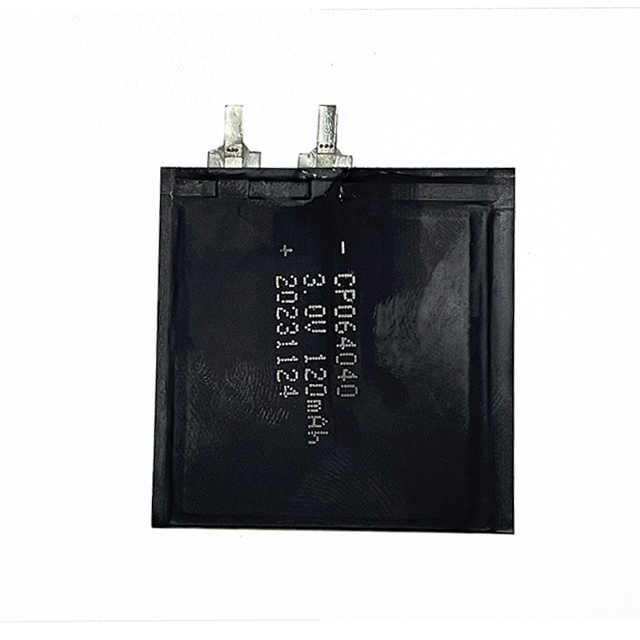The Rise of Ultra-thin Battery Cells: The Journey of 0.5mm Soft Pack Lithium Batteries
The Rise of Ultra-thin Battery Cells: The Journey of 0.5mm Soft Pack Lithium Batteries

In the rapidly evolving world of technology, batteries play a pivotal role, powering a wide range of devices from smartphones to wearables and beyond. Among these, the demand for ultra-thin battery cells has grown exponentially, driven by the trend towards sleeker, lighter, and more portable electronic products. This article delves into the intricacies of 0.5mm thickness soft pack lithium batteries, specifically 3V LiMnO2 batteries, highlighting their manufacturing, applications, and the role of Chinese factories in their production.
I. Introduction to Ultra-thin Battery Cells
Ultra-thin battery cells represent the pinnacle of battery technology, offering unprecedented levels of energy density and portability. These batteries are designed to be as thin as possible, often achieving thicknesses of just a few millimeters, while maintaining robust performance and reliability. The 0.5mm thickness soft pack lithium battery is a prime example of this technology, offering a unique blend of form and function.
II. The Anatomy of 0.5mm Soft Pack Lithium Battery
The 0.5mm soft pack lithium battery is characterized by its thin, flexible, and lightweight design. The battery consists of a lithium manganese dioxide (LiMnO2) cathode, an anode typically made of lithium metal or lithium alloy, and a separator that keeps the two electrodes apart while allowing the passage of lithium ions. The entire assembly is encased in a soft, flexible package, often made of laminate material, which gives the battery its ultra-thin profile.
The choice of LiMnO2 as the cathode material is significant. Lithium manganese dioxide offers high energy density, good stability, and low self-discharge rates, making it an ideal choice for ultra-thin battery cells. The 3V voltage output of these batteries further enhances their versatility and applicability in a wide range of devices.
III. Manufacturing Process of 0.5mm Soft Pack Lithium Battery
The manufacturing process of 0.5mm soft pack lithium batteries is a highly complex and precise endeavor. It begins with the preparation of the cathode and anode materials, which involve mixing, coating, and drying operations. The electrodes are then cut into precise dimensions and assembled with the separator in a cleanroom environment.
The assembly process is critical, as it determines the battery's performance and safety. The electrodes and separator are carefully aligned and stacked, ensuring minimal internal resistance and optimal ion flow. The entire assembly is then enclosed in the soft, flexible package, which is hermetically sealed to prevent leakage and contamination.
Once assembled, the batteries undergo rigorous testing to ensure they meet performance standards. This includes testing for capacity, voltage, discharge rate, and safety parameters such as overcharge, over-discharge, and short-circuit protection.
IV. Applications of 0.5mm Soft Pack Lithium Battery
The ultra-thin profile and high energy density of 0.5mm soft pack lithium batteries make them ideal for a wide range of applications. One of the primary uses is in wearable devices, such as smartwatches, fitness trackers, and health monitoring devices. The thin, flexible design allows these batteries to be integrated seamlessly into the devices, providing extended runtimes without compromising on comfort or aesthetics.
In addition, these batteries are finding increasing use in other portable electronics, such as thin laptops, tablets, and e-readers. The high voltage output and stable performance of 3V LiMnO2 batteries make them suitable for powering a wide range of circuits and components.
Moreover, the safety features of these batteries, such as overcharge and over-discharge protection, make them a reliable choice for applications where safety is a key concern.
V. The Role of Chinese Factories in the Production of Lithium Manganese Dioxide Batteries
China has become a global hub for the production of lithium manganese dioxide batteries, owing to its advanced manufacturing capabilities, competitive pricing, and robust supply chain. Chinese factories have invested heavily in research and development, optimizing the manufacturing process and improving battery performance.
The availability of high-quality raw materials and components, coupled with skilled labor and advanced machinery, has enabled Chinese factories to produce batteries that meet the highest standards of quality and performance. This has resulted in an increasing demand for Chinese-made lithium manganese dioxide batteries, both domestically and internationally.
Moreover, Chinese factories have been quick to adapt to new trends and technologies in the battery industry. They have been actively exploring new applications for ultra-thin battery cells, such as in the Internet of Things (IoT) and smart home devices. This has further strengthened their position as a leading supplier of lithium manganese dioxide batteries.





